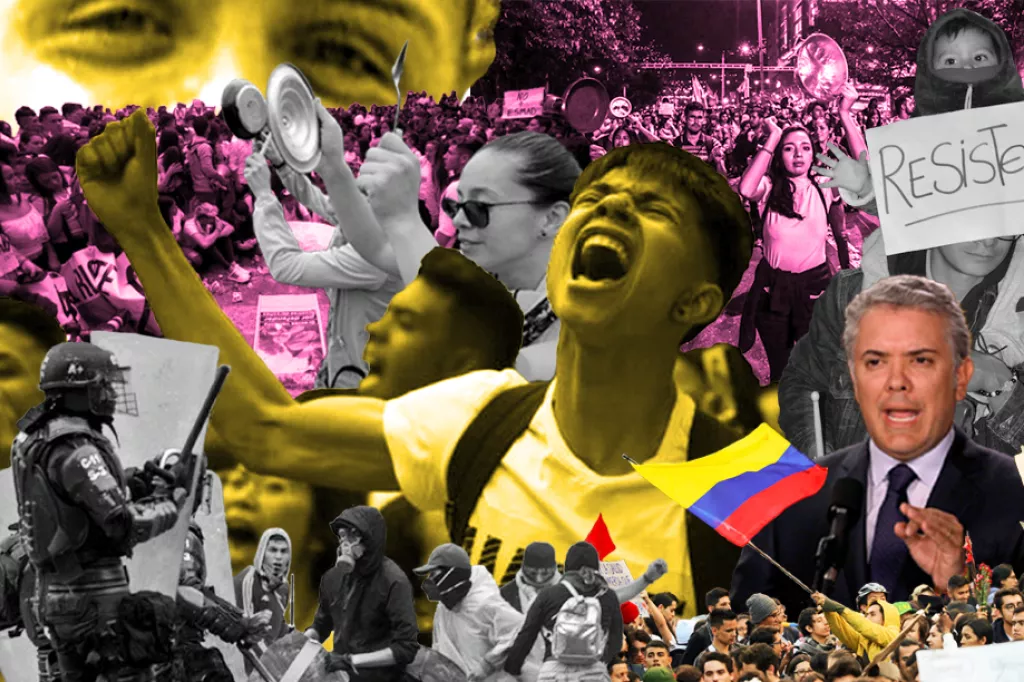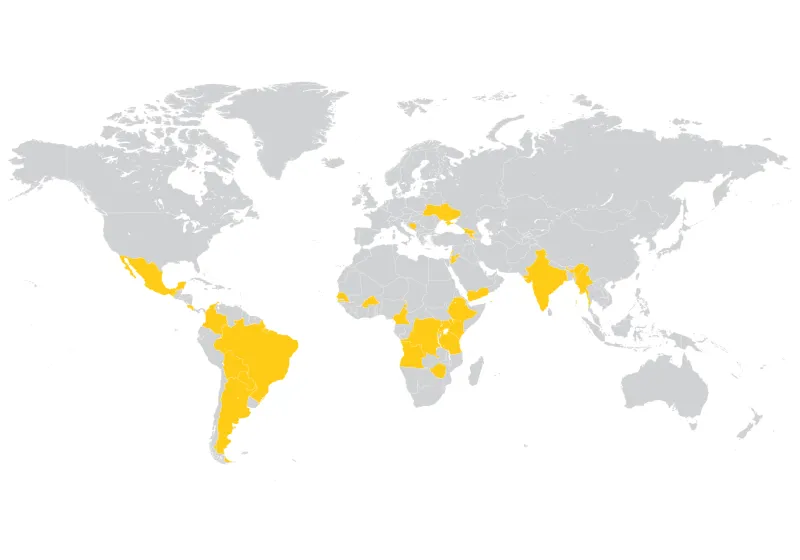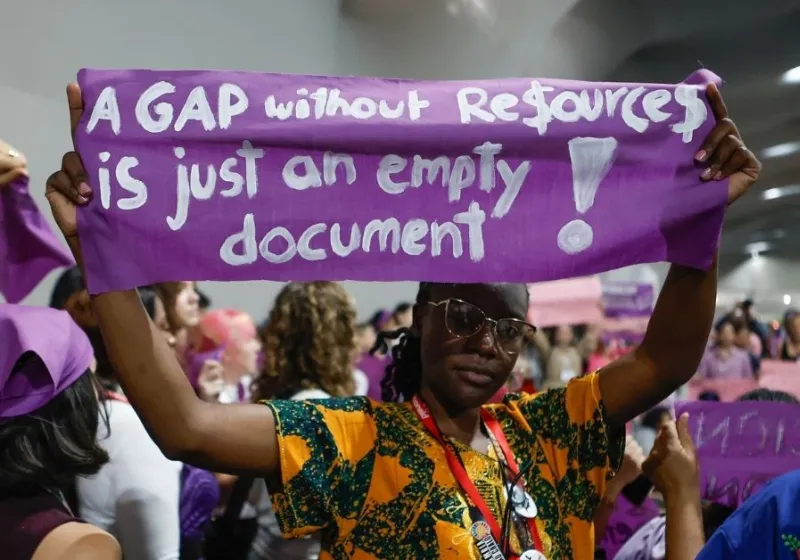Colombia in the Latin America turmoil: same but different

Colombia in the Latin America turmoil: same but different
It is not a novelty to read and listen about Latin America being on a very agitated period during the last couple of months. Nonetheless, even though we have been hearing about mobilisations, protests and even chaotic riots in Chile, Ecuador, Bolivia, Venezuela, Brazil, Colombia, Perú, Argentina,… these are all manifestations of very particular cases of response and reaction to the same global issues.
Economic growth based on extractivist industries and agribusiness, deficient social welfare systems (health care and pensions), the privatization and low quality of education, as well as already unbearable levels of corruption, are some of the main triggers of social and political mobilisation in the Latin American continent.
A brief rear view mirror reflection
Even though what is happening in Colombia is in some way an exceptional situation (the last national strike of this proportion occurred in 1977), it is not precisely an awakening of social movements and civil society in Colombia, as the country has a long history of struggle for land rights (mainly peasant and indigenous movements), and political reforms (students movement that initiated the process for a new Constitution in 1991), among others.
Colombian society has been considered indifferent - at least during recent history - partly because during the armed conflict social mobilization was stigmatized, and related to the existence of the leftist guerrillas. Now that the FARC guerrilla has transformed itself into a political party, as a result of the Peace Agreement signed in 2016, there seems to be more room for civil mobilisation.
Nonetheless, Colombian society has been very much polarised (almost 50/50) regarding the Peace Agreements, as the 2016 the approval plebiscite urged by president Santos came to show.
Colombian civil society rises once again, in unprecedented ways
The national strike that started one week ago (November 21) was called by labour unions after a couple of months of rumours about reforms and pension cuts - proposals never formally announced by the government. It is a mobilisation that comes up as students were already hooding up weekly rallies to demand the fulfilment of the agreement negotiated a year ago with the government, also after a long period of manifestations.
But why is Colombian civil society rising so strongly right now? The straw that broke the camel’s back, differently from Chile and Ecuador, was not small specific reform or policy, but a whole package of reforms (tax, pension and political) that the current right-winged government is intending to pass and approve through Congress. This, added to the already concerning situation of threats and deaths of human rights defenders, as well as the already mentioned corruption scandals and the conflicts generated by mining and energy projects throughout the country, finally converged in the national strike of November 21 (21N), which gathered almost every social sector in Colombia (labour unions, teachers federation, students, indigenous, peasants, afro-Colombian, women, LGBTI, environmental organisations, Peace Agreement supporters… the list might go on and on).
Despite the growing amount of dissatisfaction on several topics, the Colombian government has shown a disconnection with the diverse responses and manifestations of Colombian society in general during these turbulent days.
The government had already missed a very important message with the results of the local elections in past October, where there was a notorious upraise of centre-left movements and parties all around the country, and the setback of the president’s right-winged party Centro Democrático, a political collective guided in a messianic way by the former president (currently senator) Uribe.
The government strategy towards the strike included speaking out frequently about it, but always creating a shadow of fear, warning that large acts of violence could occur, when there were no specific indications of it. A couple of days before 21N, more than 20 raids were carried on by police forces to artist collective and alternative media, in some cases destroying property and taking equipment and materials, with the argument that these organisations were preparing to execute terrorist acts during the strike. No real evidence was gathered, and even the National Attorney’s Office stated officially that the raids had been illegal. Also, to generate some kind of uncertainty and uneasiness, the government decided to declare first grade on duty call to all armed forces and closed the borderr closing in the days prior to 21N.
The violence(s)
And as it had happened in the previous months with weekly students’ mobilisations, at the end of 21N there were acts of violence that justified the reaction of the ESMAD, the police anti-riot squad which has been very criticised for their human rights abuse and extreme violence. The ESMAD squad was created in 1999 and to date there have been reported at least 20 killings, without anyone of the investigations being resolved.
After the 21N, during the following night vandalism and organised attacks to middle-class neighbourhoods took over Bogotá, as it had curiously taken the previous night Cali (another main city), in both cases in the middle of the curfew declared by the cities’ majors, and then by the national government.
But surprisingly, despite the fear and panic created by the violence and subsequent repression, citizens in both cities, and then in many other places around the country, spontaneously decided to express their dissatisfaction by using common household pans to make noise. On the balconies and windows, and then on the streets, common citizens joined together in the “cacerolazo” (“cacerola” is pan in Spanish), now a very common protest form in Latin America, but the first one to ever occur in Colombia.
As the strike is still on and mobilisations have been ongoing already for a week, repression even towards pacific demonstrations have occurred, causing severely injured victims and police officers as well. On the mobilisations of 23N (Saturday) in Bogotá, an ESMAD policeman shot an apparently illegal handcrafted ammunition towards Dilan Cruz, a young 18- year old student who was participating in the march. Dilan received the shot in the head, and on Sunday night died in a local hospital, after several surgeries.
Some analysts are talking about three types of violence taking place in Colombia, especially in the cities: an opportunist violence (spontaneous vandalism and looting), organised violence (which has yet to be established who is responsible, but already there are serious signs of police forces being involved) and the violence directly carried on by the ESMAD officers.
Instead of intensifying the fear, this violent repression is awaking more indignation and renewing the strength to protest for Colombian civil society. And as social media nowadays allows to report and keep an eye on the abusive actions towards the pacific protests, a new response from the State forces seems to be the growing criminalisation (mainly of students), with unjustified detentions and judiciary cases being mounted, as already several human rights defenders organisations are denouncing.
A renewed civil society
A very interesting component sector of what is going on in Colombia are young students, the so-called millennials and Z generation - which turned 18 between 2012 and 2013 -, who tend to believe less in politicians and more in specific causes. They are one of the main protagonists of the national strike, the protests and the cacerolazos; the 21N throughout the country saw banners, big signs and even simple notebook sheets raised by proud young people exposing what they stand for: peace, water access, defence of natural resources, sexual diversity, and the life of social leaders, among other.
They march because they want to, not necessarily because they are part of a political party or a social organisation, they just want to be part of this historical moment, inspired in some cases in the dream of change that is lived in other countries, and with the cell phone and networks as a weapon to organize themselves, to eventually defend themselves against authority and to spread the protest even more.
They do it accompanied, of course, by other generations that have also been seen in heaps these days.
21N is not over, and it has become 23N, 24N, 25N, 27N, 28N, and keeps on gaining strength as a civil society voice that demands a negotiation with the Colombian government, which in turn still seems disconnected to what is really happening. Even though announcing the starting of a “National Conversation” this week, the government has first held meetings with the main Colombian economical groups and with politicians, delaying the dialogue with the actual promoters of the strike, which have already declared that for the so-called “National Conversations” they demand a direct dialogue between them and the government, to negotiate on the national strike’s 12-point bid.
Sowing in the middle of the storm, later will come the harvest
When the smoke goes down, we will see more clearly the transition path of Colombian society. This will go beyond the possible negotiations that can be made by the strike leaders with a President who faces a huge dilemma in front of his electorate and the business class he represents, and who have a traditional conception of politics.
It can be said, in fact, that the country has already changed: the protest has changed and the way it is perceived.
And it can be heard. With pans. A Colombia that is not satisfied. For a thousand reasons, as evidenced on 21N and the subsequent days. A Colombia that is trying and managing to be heard calmly.
Where did that force come from? What moved the collective heart of that part of society that spontaneously got together and took care of each other in the same route? Will that change the country? The government? The way of doing politics?
Sources:
Al Jazeera: “Colombia protests: What prompted them and where are they headed”
BBC World: “Dilan Cruz, Colombian teenager injured by police projectile, dies”
La Silla Vacía (in Spanish): “La Colombia de la cacerola”
Other recent articles

ForumCiv’s social media accounts labelled as “extremist materials” in Belarus
Important message to our Belarusian followers. Any interaction with our content can now lead to legal consequences in Belarus. Please read the information below and take the necessary precautions for...

ForumCiv enters new strategic partnership
ForumCiv is proud to announce a new three-year strategic partnership with Sida, totalling SEK 137 million.

ForumCiv at COP30: African voices at the centre of climate justice
ForumCiv is participating in COP30 in Belém to amplify the voices of African civil society, who stand at the frontlines of the climate crisis yet are often excluded from decision-making.